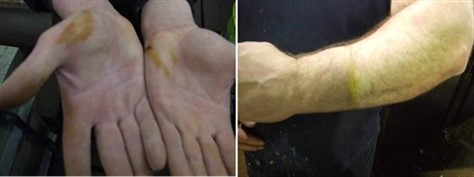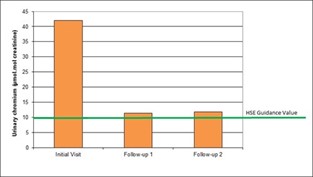Carcinogens in the electroplating industry

The Challenge
In the electroplating industry, hexavalent chromium and nickel
compounds are widely used in deposition plating processes. Both are
classified as skin and respiratory sensitising agents as well as
being carcinogens; it is therefore important, and a legal
requirement, that exposure be reduced to levels as low as
reasonably practicable (ALARP).
An estimated 3,000 workers are potentially exposed to nickel
and/or hexavalent chromium in the electroplating industry, through
inhalation of dusts, fumes and mists, by absorption through the
skin, or by ingestion as a result of hand-to-mouth contamination.
Consequently, efforts to reduce worker exposure rely on good
working practices, appropriate engineering controls and suitable
personal protective equipment used correctly.
The Solution
This HSE study, with the cooperation of the Surface Engineering
Association, looked at whether repeat biological
monitoring could drive sustainable improvements in exposure control
by raising individual worker risk awareness and improving worker
understanding of exposure pathways.
Workers at 49 electroplating companies took part by providing
post-shift urine samples for three consecutive days. These sets of
samples were collected at the start of the project then at 6 and 12
month intervals, to assess levels of exposure to chromium and
nickel. Following the results of the initial sampling, direct
feedback and targeted advice was provided.
Routes of exposure were also investigated by conducting hand
wash sampling, taking surface wipes and air sampling.
The Outcome
Many companies were found to be controlling exposures within the
current guidelines, although there were still areas for
improvement. In 15 of the 49 companies, more than half the workers
had elevated urinary nickel levels; the same was true for urinary
chromium levels at 13 companies. After HSE gave feedback and
guidance, worker exposures were significantly reduced in these
companies in the follow-up sampling rounds. Repeat biological
monitoring saw reductions in the range of 30 to 40% for nickel and
20 to 30% for chromium.
The graph below shows the reduction in urinary chromium levels
for a maintenance worker as a result of advice given after the
initial sampling, with follow-up values about one-quarter of the
initial values.

The study demonstrated that biological monitoring is a very
effective tool for exposure assessment and that repeat testing can
drive improvements in exposure control and personal risk awareness,
leading to reduced levels of nickel and chromium exposure.
View more examples of our work in this
area.
For more information about how we could do something
similar for you, email us at: registration.sample@hse.gov.uk
Back to the top